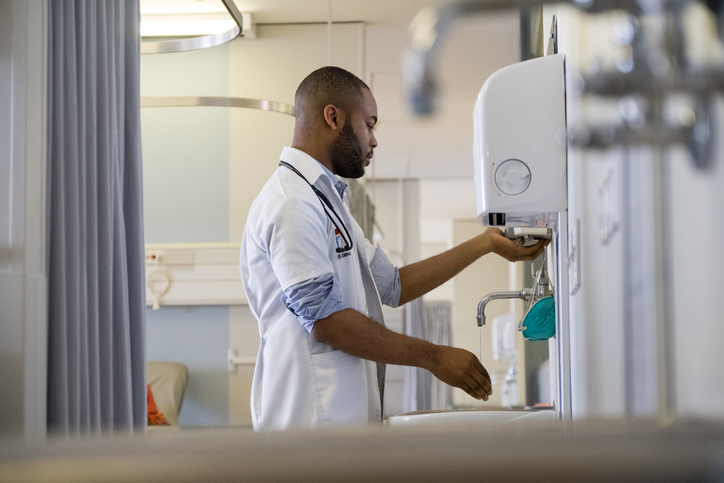3 Ways to Reduce Infections in Hospitals

By Medline Newsroom Staff | December 26, 2018
Healthcare-associated infection (HAI) rates have steadily improved over the past decade, but as the Agency for Healthcare Research and Quality has reported that HAIs continue to cost hospitals precious lives and billions of dollars annually. “Hospitals know that deadly pathogens are public enemy number one,” says Rosie D. Lyles, M.D., director of clinical affairs at Medline. In order to further reduce infections, healthcare organizations should consider adopting a three-pronged strategic approach.
1) Invest in antimicrobial textiles
Hospitals should consider investing in antimicrobial textiles, which can destroy or inhibit disease-causing microorganisms such as bacteria and fungi that lead to HAIs. For example, a recent study published in American Journal of Infection Control looked at the rate of contamination of hospital privacy curtains in a burn ward. The authors found that while freshly-laundered curtains contained minimal contamination, most of those left hanging for two weeks tested positive for methicillin resistant Staphylococcus aureus (MRSA). Additives coating, or woven into, fabric can transform beds, bed linens, gown, surgical towels and other products into a front line against infection. Environmental staff will also appreciate that this solution requires no extra work on their part.
2) Adopt a systematic approach
Infection preventionists don’t currently have agreed benchmarks for determining when a surface is “clean” and therefore safe. That doesn’t mean that hospitals shouldn’t adopt a systematic approach to promote behavior changes and reinforce protocol. Medline offers the ERASE PATHOGENS program, developed in conjunction with environmental and nursing experts, which helps hospitals and clinics improve and standardize their infection-prevention efforts. Even using a simple microfiber cloth requires a consistent process, Dr. Lyles explains. “If you use the same side of the cloth to clean and bed and another surface, contamination spreads.”
3) Promote hand hygiene
Despite notable hand hygiene protocol improvements, clinicians and support staff have been shown to wash their hands half as often as they should. A thorough hand hygiene protocol alone can dramatically reduce HAIs. It might seem simple, but a well-followed hand hygiene program can deliver big results. After implementing a new hand hygiene program in 2013, University of North Carolina Hospitals realized a six percent reduction in overall HAIs in a 17-month period.
This article was adapted from a feature in Threads magazine. Click here to subscribe to Threads.
You can learn more about the comprehensive infection prevention solutions Medline offers.
Medline Newsroom Staff
Medline Newsroom Staff
Medline's newsroom staff researches and reports on the latest news and trends in healthcare.

